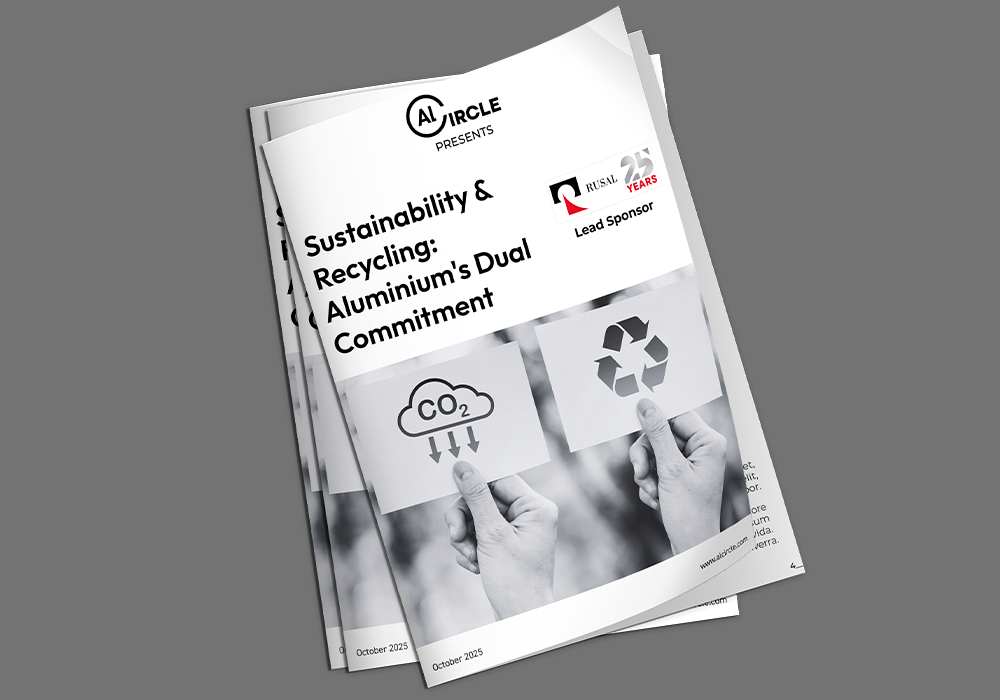

If there’s one mission that unites nations, industries, and communities across the world today, it is sustainability. Achieving harmony between environmental protection, social equity, and economic growth to ensure long-term co-existence between humans, nature, and industries has become an ultimate goal for global progress. And this shared vision is compelling governments and industries alike to rethink how they operate, produce, and consume. From clean energy mandates to carbon taxation, every global policy is designed to reduce the rising carbon footprint for our planet’s future.

Certainly, heavy industries are under the environmental spotlight, and aluminium is one of them since it emits 3 per cent of the world’s direct industrial CO2 emissions. However, the industry, which is long regarded as a high-carbon emitter, has now embraced countless innovations to achieve sustainability far beyond energy reduction alone.
Well, theoretically, the minimum energy required for primary aluminium production is 6.3 kWh/kg through the electrolysis process, while the amount of carbon emitted per tonne of primary aluminium production is approximately 14.8 to 16 tonnes of CO2e. That’s a real paradox. On one hand, it requires a certain amount of energy, while on the other, it emits carbon beyond a level. What’s the way then? Downsizing production? But the persistent demand growth for aluminium will never allow that.
The solution is not curbing energy consumption; instead, increasing green power usage, such as renewable energy that includes energy generated from solar, wind, hydro, geothermal and biogas – because using renewable power can abate 49 per cent of emissions. What more? Solutions like novel cathode designs and optimising cell efficiency with advanced control systems and AI can improve current efficiency and reduce specific power consumption. Utilising high-power DC power supplies and improving the conductivity of components like collecting bars can also lead to energy savings. But these solutions come with a considerable price tag.
Also read: Low-carbon aluminium: The race towards net-zero emissions
So, here’s to the most preferred way to attain sustainability in the aluminium industry, and that is recycling scrap. Aluminium scrap recycling delivers a dual advantage: it saves energy up to 95 per cent otherwise needed to produce primary aluminium, and because it saves energy consumption, it reduces greenhouse gas emissions. Recycling one tonne of aluminium saves nine tonnes of CO2 emissions. In 2024, the global aluminium recycling rate was 76 per cent, with old scrap availability of 25.4 million tonnes and new scrap availability of 16.5 million tonnes.
Collectively, through all these measures, the global aluminium industry has achieved 25 per cent of the 2030 carbon reduction target, staying ahead of all other heavy industries. But with the world still needing to cut emissions by 43 per cent from 2019 levels by 2030 to stay within the 1.5 degree Celsius target, one crucial question remains: is the aluminium industry on track to achieve the remaining 75 per cent in time?
To explore this question and discover how leading aluminium companies are driving the next phase of the sustainability transition, read our latest e-Magazine, “Sustainability & Recycling: Aluminium’s Dual Commitment.”
This edition brings together insights from global leaders championing low-carbon aluminium through recycling and circular practices. On one hand, it features producers from the primary and downstream aluminium sectors who are integrating recycled content into their operations; on the other, it highlights recyclers dedicated to transforming scrap into new value. Leading aluminium producers like RUSAL, Midal Cables B.S.C., Assan Aluminyum, and ALCOM are featured in this magazine, and complementing them we have technology pioneers like EPIQ Machinery, MQP, Enpot, Speira, Cetag, Steinert, and Sortera Technology who are pushing the boundaries of aluminium recycling with cutting-edge solutions.
So, what are you waiting for? Explore the latest issue of “Sustainability & Recycling: Aluminium’s Dual Commitment”, now available on AL Circle’s website, and discover how the aluminium industry is advancing towards its sustainability goals through recycling, renewable energy, and technological innovation.
To gain more insights into aluminium recycling market, technologies, and trends, download our report: "World Recycled ALuminium Market Analysis Industry forecast to 2032"
Responses








